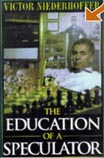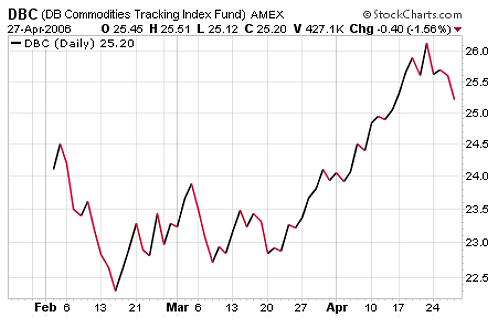| Home | About Us | Resources | Archive | Free Reports | Market Window |
Cotton in EarsBy
Saturday, April 29, 2006
Soros gave me the nickname “loser” because it happened so often. I can’t blame him. “Victor, you lost me $500 million this year,” he’d say. As I slunk away, he’d continue, “But who knows how much I would have lost without you.” The one thing I can say in my defense is that at least I am aware of my predilection and have taken steps to overcome it. When I first started speculating in organized markets, I quickly ran a $40,000 initial stake into $22 million. My technique was simple: I bought gold at $290. Each time it went up $10, I pyramided and added to my holdings with my profits. The one thing that saved me was that my previous experiences in sports and poker playing indicated that momentum had a way of changing. I had learned that much from [Uncle] Howie. Gamblers usually decide to limit how much they will lose, but they rarely limit how much they will win or what percentage of their winnings they will give back in bets if they are lucky enough to get ahead. This seemed a costly omission. I decided to set my loss limit at 50 percent of my winnings I couldn’t lose. My strategy was good for unlimited profits and, at worst, I’d end up with $11 million. The goddess of losses is a terrible temptress. She does everything possible to prevent her worshippers from allowing friends to protect them from her clutches. The model story on this point is Odysseus. On his voyage home from the Trojan War, he was informed by Circe that his ship would pass by the bewitching Sirens. He desperately wanted to hear their beautiful songs without being lured to destruction. Knowing that he was prone to weakness, Odysseus ordered his crew to put beeswax in their ears and tie him up. He knew that the Sirens’ beauty was so great that he would refuse to listen to anyone who tried to stop him from joining the temptresses. To protect against his own weakness, he directed his men, “If I beg you to release me, you must tighten and add to my bonds.” With $22 million in profits in gold, the Siren song of profits lured me to bigger and bigger risks, but I knew I was vulnerable. As the markets heated up, I put on my maximum bullish position and removed myself from the fray. I locked myself inside a racquetball court instead of tying myself to a ship’s mast. I issued instructions to my assistant and future wife, Susan:
I took a trip to Staten Island, secure that nothing could go wrong. I started my game against my opponent on top of the world. It was calm on the racquetball court, and my opponent and I lost ourselves in the game. After the first two games, I broke for a call to my broker. Some rumors about liquidation by the Hunts had hit the fan. My wealth had dropped severely—perhaps by 50 percent or so! I immediately placed a call to Susan, “Untie me. Disregard everything I said before. Don’t sell anything, it will come back.” She tightened the bonds, selling out not only 50 percent of my positions, but an additional 50 percent. My faithful companion followed my original directions. Had she not done so (and had I not been astute enough to ask her to tighten the bonds if I relented), my wealth would have dwindled to zero. To give the goddess of losses her due, however, she managed to take back an additional 45 percent of my winnings, leaving me with just 5 percent of my previous high to continue on my discovery. Like all too many gamblers, however, I was rueful. For months after, I couldn’t refrain from giving Susan that famous Eisenberg-Reisman intimidation technique. “You ignominious nonentity, don’t suppress me ever again.” Good Investing, Victor Niederhoffer Reprinted by arrangement with John Wiley & Sons, Inc.
Market NotesYou can own raw commodity futures in your retirement account....
Prior to the launch of DBC, there was no way for retail investors to own raw commodities through the stock market. DBC started trading on February 6, 2006. Notice how its price immediately fell ten percent. It looks like traders bid up the commodity prices in anticipation of its launch and then sold out when trading began. On Wall Street, they call this: “Buy the rumor, sell the news.” Until this week, there was no way for stock investors to own silver. On Friday, trading opened for the new silver ETF (NYSE: SLV) Over the last few weeks, silver’s price has surged in anticipation of this new silver product. But now that it’s trading, is it time to sell the “news”? We watch with interest. |
Recent Articles
|



